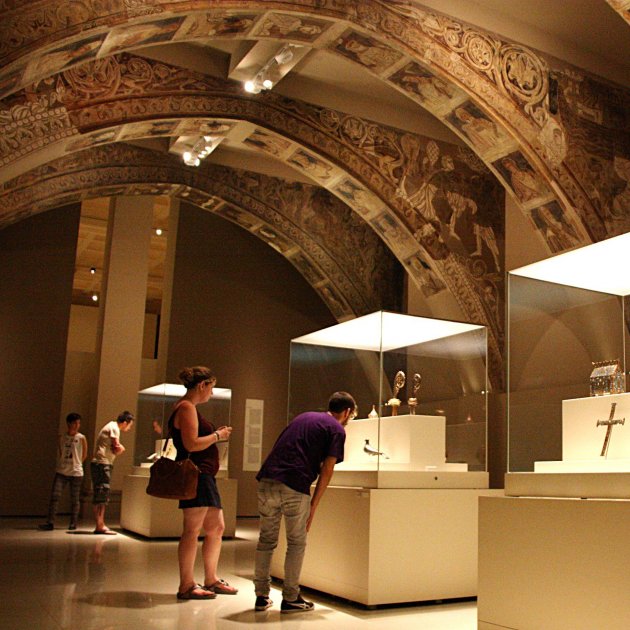The long-running controversy between Catalan and Aragonese authorities over the ownership of the artworks of Sixena has had its embers stirred again by statements made by Javier Lambán, regional president of Aragon.
Lambán, who a few days ago also affirmed that Catalan president Quim Torra, “does not represent Catalonia”, paid a visit to the monastery of Santa Maria de Sixena on Saturday. The monastery is the epicentre of the long litigation over the sacred art it contained, a controversy which exploded last December when the Spanish government stepped in and used its direct rule over Catalonia to physically remove 44 disputed pieces from the Lleída Museum and deliver them to the Aragonese authorities.
Lambán fanned the flames of the controversy on his visit to the monastery's chapter house, which prior to the Spanish Civil War, held other paintings that were subsequently rescued (literally) by art technicians from the Catalan authorities and are now part of the collection of the Museu Nacional d’Art de Catalunya (MNAC), but are also claimed by Aragon.
However, according to Lambán, the circumstances under which these paintings were removed - after a fire, with the monastery in a semidemolished state and amidst the chaos of the war - do not count for much. In fact, the Aragonese leader summarized what happened with his reference to “the paintings that a Catalan tore down decades ago to take them away to Barcelona”.
Translation: The Sixena chapterhouse, ready to receive the paintings that a Catalan tore down decades ago to take them to Barcelona. There is already a court decision in our favour but the judge for the moment is refusing to authorise the transfer of the works. The Aragonese government will not stop until we achieve this using all legal means — Javier Lambán
Lambán's tweet explains the historical events as if it had been a simple case of plunder, rather than a rescue operation whose primary consequence was that the paintings still exist today.
